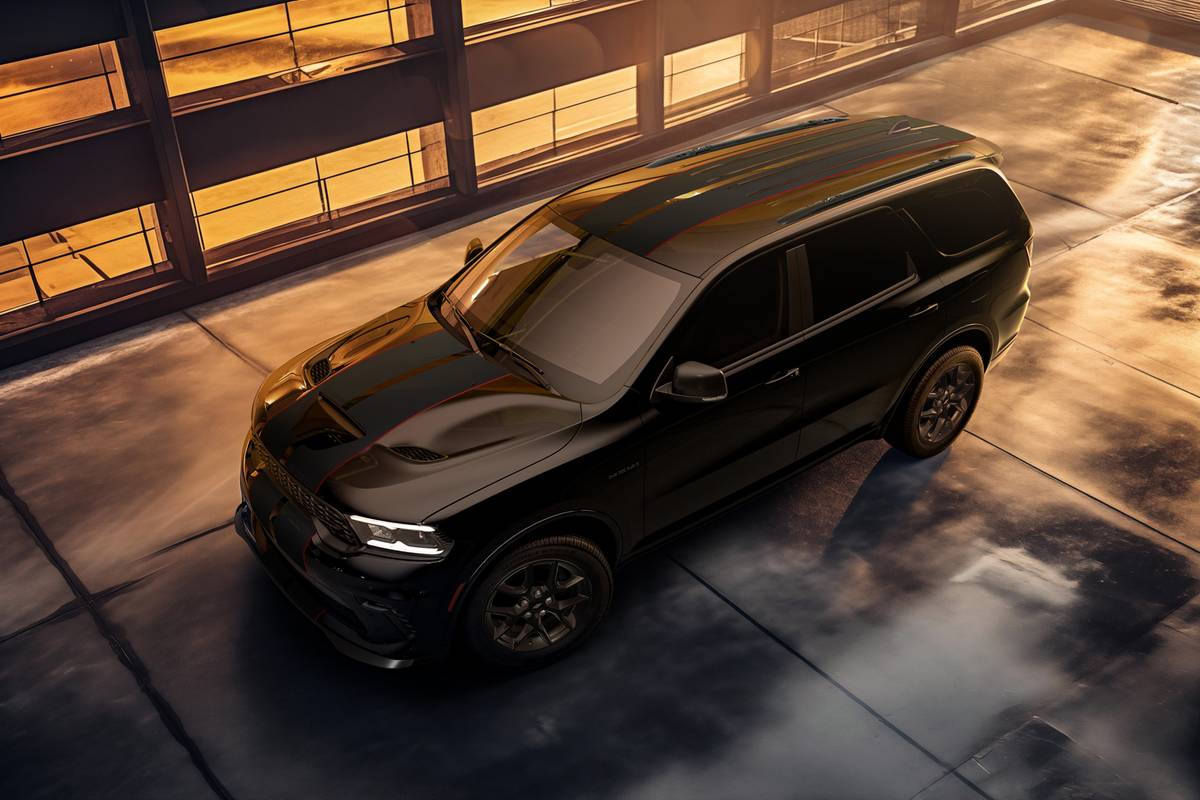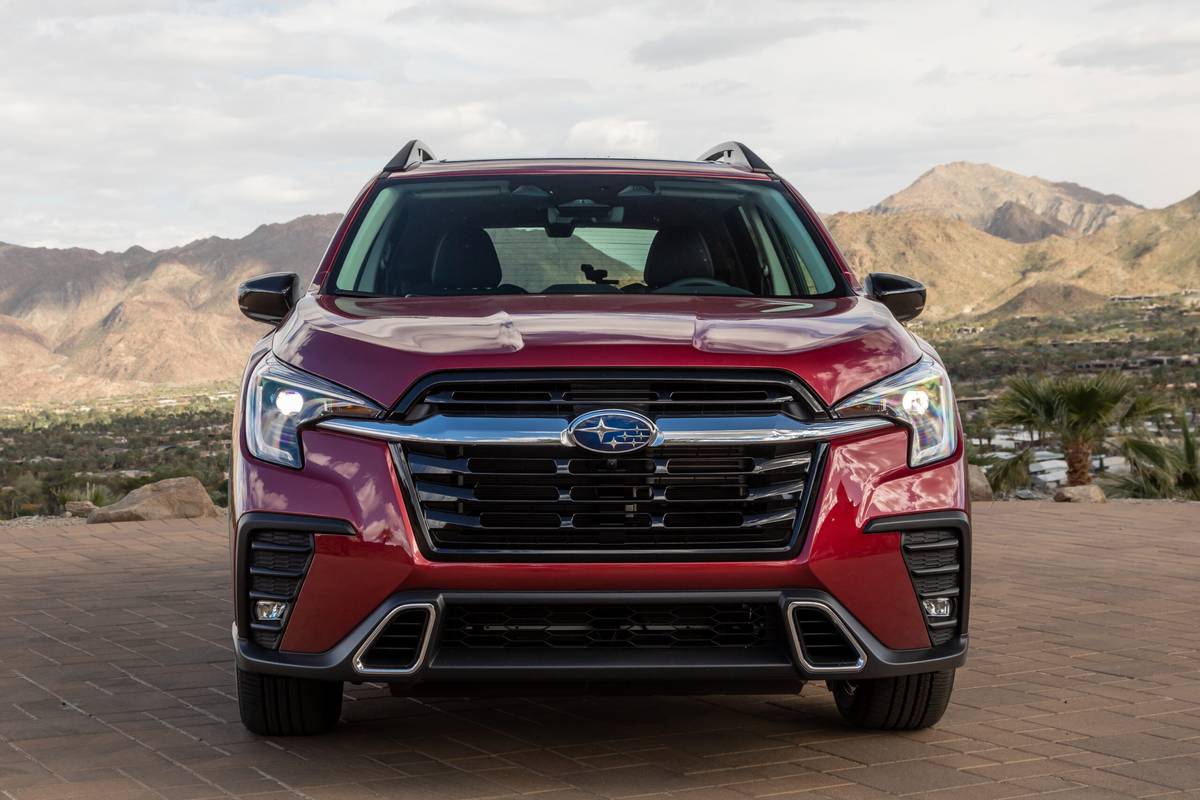Cincinnati.com's view
Ford Motor Co.’s latest offering, the Escape mini-utility vehicle, has had a hard time escaping from the recall police . . . at last count, it had been put on hold at dealerships five times, pending a fix for problems ranging from a faulty cruise control to fuel leaks to failing windshield wipers. These were recalls Ford itself initiated following field reports of, uh, anomalies.
Ford spokesmen tried to put a good face on it, saying any new vehicle has its little problems, but I cannot recall such a flurry of fixes in my quarter-century of reviewing. I always suggest to would-be buyers that they wait a while for a new vehicle to show its weaknesses in field tests by real consumers before taking the plunge. In the case of Escape, that seems like a more-than-usually prudent course of action.
Armed with a cell phone and a triple-A card, I intrepidly signed up to hazard some miles behind the wheel of an Escape. In the end, Ford acceded to my request with two samples, one an austere, two-wheel-drive version with four-cylinder engine, the other a 4×4 powered by a six-holer. We’ll meet the 4-by-4 in a couple of weeks, and concentrate today on the 4×2. Ford calls the Escape a “small SUV for big-city driving, outdoor fun.” The machine was co-developed with Ford’s investee, Mazda, which gets a differently-skinned version of the item from the same line in Claycomo, Mo. Mazda’s variant is called Tribute.
Ford defines the direct competition as Toyota’s new RAV4, Honda’s CR-V and the Jeep Cherokee, which, it was just recently announced, is driving into the sunset, to be replaced in a few months by the all-new Liberty.
It’s technically a misnomer, I think, to label a strictly front-wheel-drive vehicle a sport-utility vehicle, the usual acceptance of “sport” in this context meaning the ability to go where there are no roads. But we’ll let the wannabe ride its brother’s coattails. If I called it a tall station wagon (which is what it is), they’d probably sue me for loss of business.
Strip off the sport and you have left, utility. Which in this case comes from carrying capacity. With the second row of seats in place, there’s 33 cubic feet of room for gear behind them, about twice what the trunk of a large car would offer. With the seats folded, you have just short of twice as much space to work with. The total interior volume is 133 cubic feet, which translates into a reasonably comfortable flight deck and room for three smallish folks in second class.
Empty, the Escape stands just 5 feet 9 inches, enough to make it look SUV-y, rather than wagon-y, and also to make entry and departure rather simple. It’s not necessary to be overly cautious about ducking under the roofline, nor is it required to climb up into the cabin, as with full-size SUVs. The 4×4 version I tested had the optional side-mounted step bars, which were probably more hindrance than help, as I generally find such to be on anything this side of an Excursion.
From behind the steering wheel, it feels appreciably higher than a car, giving some sense of commanding the road, which is what the focus group testers say people most cherish about SUVs. At the same time it doesn’t feel tippy or ungainly.
A 2-liter, double-overhead-cam four-cylinder engine is standard on both 4×2 and 4×4 Escapes. It is married to a five-speed manual transmission. Stepping up to a 3.0-liter V-6 costs about $1,500, but it also brings a 4-speed automatic transmission. (There’s no mixing and matching.)
The two-wheel-drive test machine fared reasonably well with the four-banger, weighing just a trifle over 3,000 pounds in such a state. The engine produces 127 hp (@5,400 rpm) and 135 foot-pounds of torque (@4,500). As those peak-output numbers suggest, it takes some spinning to get some poke, and you’ll be seeing a lot of rear license plates at the stoplight grand prix.
Curiosly, the 8,000+-rpm eter has no red warning zone, but the point of diminishing returns is obviously around 6,000. The engine is boomy and thrashy sounding, in a pugnacious sort of way that’s not exactly discordant with the overdone tough-guy exterior cladding touches. The linkage of the five-speed shifter was absolutely wretched. The shift lever felt as if it were embedded in a lump of tar. For all that, though, it moved from gear to gear reasonably well and I didn’t find myself catching the wrong cog even when trying quick changes. The clutch was light and not too tricky.
Overall gearing with the four-cylinder engine is such that, despite its having a modest overdrive fifth, each 1,000 engine revs parlays to only 21 mph. At highway speeds, it sounds rather busy, but the wind and chassis noises are of more concern. It wouldn’t be my choice, especially in front-wheel-drive configuration, but the Escape can tow. It’s rated at up to 1,000 pounds with the four-cylinder, and as high as 3,500 pounds (with optional Class II towing package) with the six. Ford says none of the Escapes can be “dinghy towed,” i.e., pulled behind a motor home with its wheels on the ground.
Ride quality of the base Escape was fairly good. It is of unibody construction, like a car, rather than chassis-on-frame, like a truck. I would judge its ride over varying surfaces to fall between that of the sportier RAV4 and the more-compliant CR-V.
The Escape in base trim sits on 15-inch steel wheels. They are encased in decently large 225/70 rubber. With that profile, the tires have enough give to absorb a lot of run-of-the-mill road irregularities. They did howl, sending an early warning, when my maneuvering took them close to their limit of adhesion, but they had good grip on rain-slicked pavement. The Escape has 4-wheel independent suspension, with MacPherson struts, coil springs and a stabilizer bar up front and semi-trailing arms rear, again with coil springs. All this contributes to a poised demeanor, even over flawed surfaces.
The Escape has 10.9-inch disc brakes in front, 9-inch drums in the rear. They felt a little soft, but were easily modulated and stopping was within my comfort zone. The antilock mechanism was quiet and effective . . . until it went away. About five days into the test period, the ABS warning light came on. I discovered that turning the ignition off and on again would reset it briefly, but the indicator eventually came back on. It was not lying — when I tested the brakes in a simulated panic stop on ice, there was no antilock effect and the Escape promptly went into a sideways skid. Don’t try this at home. Often such indications are spurious, but where brakes are concerned, there’s no room for speculating. Hie thee to a dealer.
Base price on the Escape 4×2 XLS is $17,645. That includes an AM-FM-CD stereo, solar-tinted glass, roof rack, power windows, locks and mirrors, rear defroster and wiper, tilt wheel, remote keyless en try, console with FIVE CUPHOLDERS, front depowered air bags and air conditioning. The tester had an added cassette deck, $130; a group consisting of floor mats, cruise control, cargo cover and perimeter alarm, $325; side air bags, $345, and antilock brakes, $575. Total, with freight, was $19,535, quite a fine value for a runabout, the reliability issues aside.
“The Gannett News Service”
Latest news



